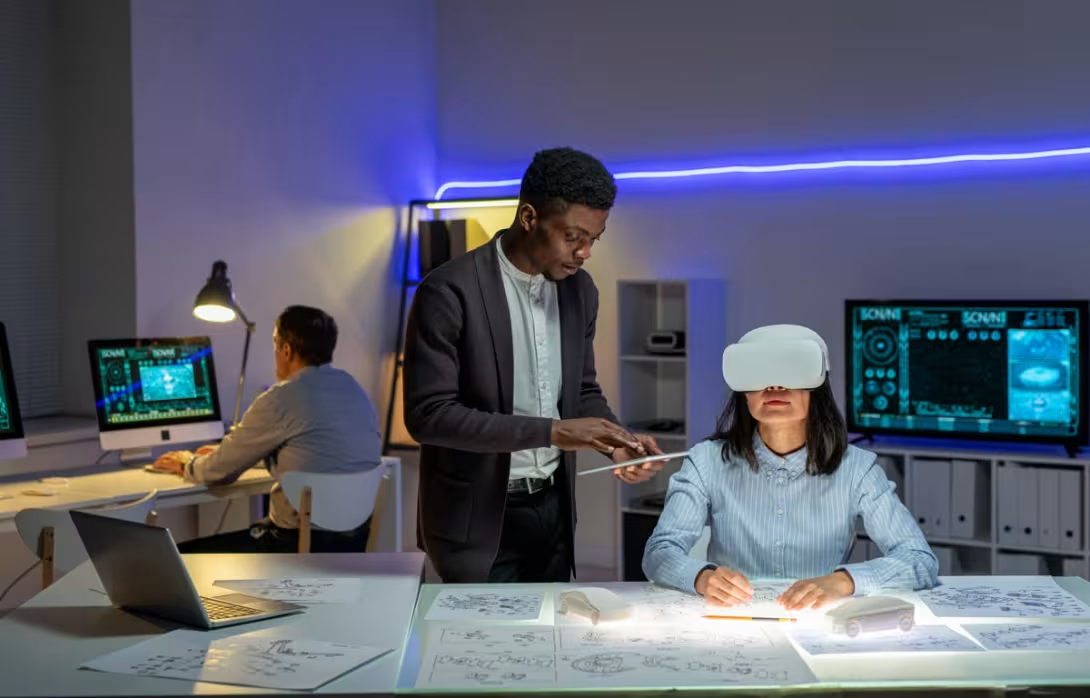
In today’s rapidly evolving tech landscape, virtual reality (VR) is no longer confined to gaming and entertainment. It has become a powerful tool for design and engineering, especially in the automotive industry. The image captures a team of innovators leveraging VR headsets and digital simulations to bring futuristic concepts to life. By blending creativity with advanced technology, they are redefining how vehicles are imagined, tested, and refined.
VR allows designers to step inside their creations, experiencing proportions, ergonomics, and functionality in real time. Instead of waiting for physical prototypes, teams can identify flaws and improve designs at an early stage, saving both time and costs. This immersive approach enhances collaboration across departments, enabling engineers, designers, and project managers to communicate ideas more effectively.
The workspace in the image illustrates this synergy perfectly. Blueprints and sketches sit alongside 3D models, while VR provides an added dimension of interaction. This combination of traditional design methods with cutting-edge visualization tools creates a dynamic workflow that fuels creativity. The automotive industry is using this integration to speed up innovation cycles and deliver smarter, more efficient vehicles.
As VR technology continues to evolve, its impact on design will only grow. From safety testing to customer experiences, virtual environments are set to become a staple in every phase of automotive development. The future of car design is no longer limited by the physical world—it is driven by imagination, powered by technology, and shaped within virtual spaces.
